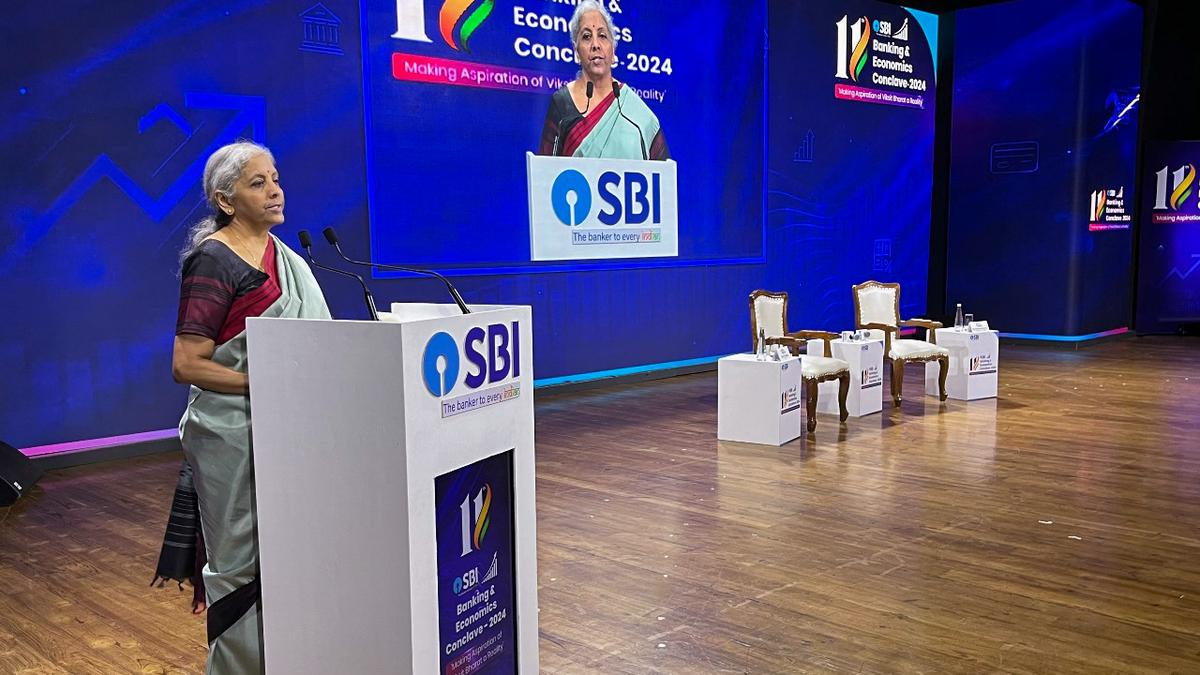The problem of high food inflation will be “less severe” in India going ahead, as modern supply chains with diversified sources can help quickly address sudden spikes in prices of specific food items, RBI Monetary Policy Committee (MPC) member Ashima Goyal said on April 25.
Stressing that the share of food in the household budget is high in India, Ms. Goyal said policy needs to focus on increasing agricultural productivity, since stable agricultural prices are important for non-inflationary growth.
Also Read | Extreme weather may pose risk to inflation, says RBI Bulletin
“As India develops, this problem (high food inflation) will get less severe, for a number of reasons. Modern supply chains with diversified sources respond quickly to large spikes in specific items,” she told PTI.
Ms, Goyal further pointed out that one does not hear of tomato or onion prices spiking in advanced economies.
“We naturally have diverse geographic regions, better integrated markets sourcing from different regions can help mitigate climate change induced food price spikes,” she said.
Moreover, as the weight of food in consumption falls and food consumption itself becomes more diversified, the impact and size of future food price shocks falls, she noted.
Ms. Goyal stressed that under flexible inflation targeting, expectations get better anchored.
She cited the example of East Asia, where food prices were allowed to rise and agriculture was subsidized only after food budget shares fell.
Also Read | Inflation drops to 10-month low in March, but no relief on food bills yet
“India unfortunately opted for a distorting system of subsidies to farmers as well as to consumers,” she said, adding that given India’s huge population this was very expensive and reduced the space for government investment in agriculture.
Besides, Ms. Goyal said it also kept inflation high as procurement prices rose each year.
She said agricultural productivity is finally rising supported by a policy reset, along with the availability of new technologies even though further policy adjustment is required, she stressed.
According to official figures, retail inflation declined to a five-month low of 4.85% in March, mainly due to cooling down of food prices. The inflation in the food basket was at 8.52% in March, down from 8.66% in February.
RBI Governor Shaktikanta Das has recently said that the baseline projections show inflation moderating to 4.5% in 2024-25, from 5.4% in 2023-24, and 6.7% in 2022-23.
Replying to a question on India’s current macroeconomic situation, Ms. Goyal said conditions have been created for sustainable and inclusive growth.
“We are seeing results since 2021 with continued robust growth, reduction in multi-dimensional poverty, more assets and infrastructure sustainably helping the lower income groups, more opportunities for youth,” she said.
Ms. Goyal said inequality has risen but the famous ‘Kuznets inverted U-curve’ tells us that this is normal in a period of high growth and should come down over time.
But for the economy to continue on such a path, the eminent economist said policy continuity is very important.
“Policy lessons on what worked must be internalized, domestic policy shocks avoided and external shocks smoothed, even as supply-side enabling reforms continue,” Ms. Goyal suggested.
She emphasised on the need of enhancing the economy’s resilience and diversity saying, “we live in troubled times of geopolitical, geoeconomic and climate fragilities.”
Also Read | Indian economy projected to grow 6.5% in 2024: UNCTAD
During 2023-24, the economy is likely to record a growth rate of near 8% on account of good performance of manufacturing and infrastructure sectors.
Recently, the International Monetary Fund (IMF) raised India’s growth projection to 6.8% for 2024, from its January forecast of 6.5%, citing bullish domestic demand conditions and a rising working-age population.
The Asian Development Bank (ADB) also raised India’s GDP growth forecast for the current fiscal to 7%, from 6.7% earlier, saying the robust growth will be driven by public and private sector investment demand and gradual improvement in consumer demand.





